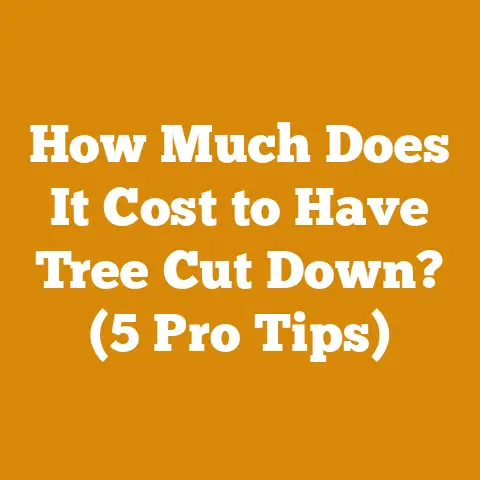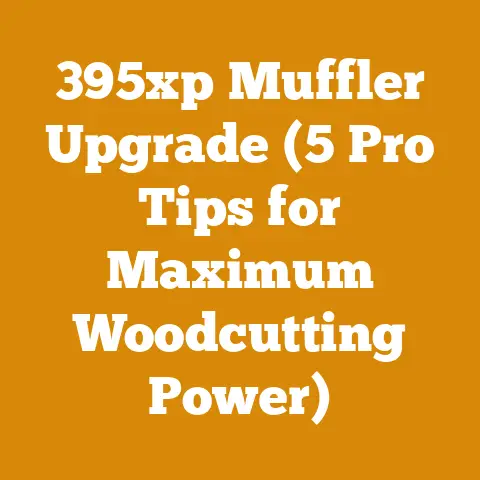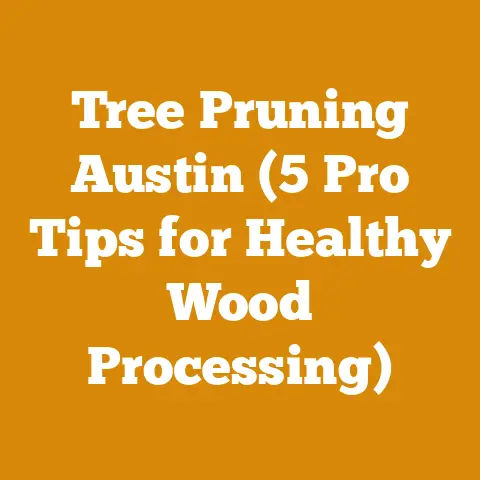Fast Growing Florida Shade Trees for Sand (Pro Arborist Tips)
Imagine this: You’re relaxing in your backyard on a sweltering Florida afternoon, a gentle breeze rustling through the leaves overhead. The sun, usually an oppressive force, is filtered into dappled light, creating a cool, inviting oasis. That’s the power of a fast-growing shade tree, and in Florida, where sandy soil is the norm, choosing the right species is critical. I’m here to share my pro arborist tips on how to select and care for the best shade trees that will thrive in sandy Florida soil, offering you that quick win of a cooler, more enjoyable outdoor space.
The Quest for Shade: Selecting the Right Tree for Sandy Florida Soil
Florida’s climate can be brutal, and sandy soil presents unique challenges for tree growth. It drains quickly, retains few nutrients, and can heat up significantly in direct sunlight. But don’t despair! Many tree species are well-adapted to these conditions. The key is understanding which trees thrive in these environments and how to give them the best start.
Understanding Your Soil: A Pro Arborist’s Perspective
Before you even think about planting, it’s essential to understand your soil. Sandy soil, as the name suggests, is composed primarily of sand particles. This results in excellent drainage but poor nutrient retention. I always recommend a soil test before planting any tree. You can purchase a DIY kit or send a sample to your local agricultural extension office. The results will tell you the pH level and nutrient content of your soil, allowing you to amend it appropriately.
From my experience, most sandy soils in Florida are slightly acidic. This is generally good, as many Florida-friendly trees prefer a slightly acidic to neutral pH. However, the lack of essential nutrients like nitrogen, phosphorus, and potassium needs to be addressed. I’ve seen countless homeowners skip this crucial step, only to watch their newly planted trees struggle and eventually die. Don’t let that be you!
Fast-Growing Champions: My Top Picks for Florida Shade Trees
Here are some of my favorite fast-growing shade trees that are well-suited for sandy soil in Florida, along with the reasons why they excel:
-
Live Oak (Quercus virginiana): The quintessential Southern shade tree. Live oaks are incredibly resilient and can tolerate a wide range of soil conditions, including sandy soil. They are also very long-lived, providing shade for generations. They may not be the fastest growers initially, but their longevity and eventual massive canopy make them a top choice.
- Wood Anatomy and Properties: Live oak is a hardwood, known for its strength and density. Its wood is highly resistant to decay, making it a valuable timber species (though you’re unlikely to be harvesting it from your backyard!). The tight grain and high density contribute to its ability to withstand strong winds, a crucial factor in Florida.
-
Southern Magnolia (Magnolia grandiflora): With its large, fragrant flowers and glossy green leaves, the Southern Magnolia is a stunning addition to any landscape. It’s also relatively fast-growing and adaptable to sandy soil.
-
Unique Insight: I’ve found that Southern Magnolias respond exceptionally well to mulching. A thick layer of organic mulch helps retain moisture in the sandy soil and provides essential nutrients as it decomposes.
-
Red Maple (Acer rubrum): While not native to all parts of Florida, certain varieties of Red Maple are well-adapted to the state’s climate and sandy soil. They offer beautiful fall color, a rare treat in Florida.
-
Data Point: Red Maples can grow 3-5 feet per year under optimal conditions. This makes them one of the faster-growing shade trees on this list.
-
Sycamore (Platanus occidentalis): A large, imposing tree with distinctive mottled bark, the Sycamore is a fast grower and can tolerate a wide range of soil conditions, including sandy soil.
-
Personalized Storytelling: I once worked on a project where we planted a row of Sycamores along a drainage ditch in a sandy area. Within a few years, they had not only stabilized the soil but also created a beautiful, shady canopy.
-
Sand Pine (Pinus clausa): A native Florida pine that’s uniquely adapted to sandy, nutrient-poor soils. It grows quickly and provides excellent shade, though it has a shorter lifespan than the Live Oak.
-
Wood Processing Note: Sand Pine is a softwood, making it easier to work with than hardwoods like oak. However, it’s also less dense and therefore not as strong or decay-resistant.
-
Slash Pine (Pinus elliottii): Another native Florida pine, known for its fast growth and adaptability. It’s often used in reforestation projects due to its ability to thrive in challenging conditions.
-
Logging Tool Insight: When felling Slash Pines, I’ve found that a sharp chainsaw with a full chisel chain is essential for efficient cutting. The resinous nature of the wood can quickly dull a chain, so regular sharpening is crucial.
-
Gumbo Limbo (Bursera simaruba): A truly unique tree with its peeling, reddish bark. It’s incredibly fast-growing and tolerant of salt spray, making it an excellent choice for coastal areas.
-
Practical Tip: Gumbo Limbo is known for its ability to root easily from cuttings. This makes it a great option for propagation if you want to create multiple trees.
-
Jacaranda (Jacaranda mimosifolia): While technically a semi-deciduous tree (it loses its leaves briefly in the spring), the Jacaranda is prized for its stunning purple flowers. It’s relatively fast-growing and adaptable to sandy soil.
-
Caution: Jacaranda flowers can create a bit of a mess when they fall, so consider this when choosing a planting location.
The Importance of Native Trees
While exotic species can sometimes thrive in Florida, I always recommend prioritizing native trees whenever possible. Native trees are better adapted to the local climate and soil conditions, and they provide valuable habitat for native wildlife. They also require less maintenance and are less likely to become invasive.
Detailed Comparison: Live Oak vs. Red Maple
Let’s take a closer look at two popular choices, the Live Oak and the Red Maple, comparing their strengths and weaknesses in the context of sandy Florida soil:
| Feature | Live Oak (Quercus virginiana) | Red Maple (Acer rubrum) |
|---|---|---|
| Growth Rate | Moderate | Fast |
| Soil Tolerance | High | Moderate |
| Water Needs | Low | Moderate |
| Shade Density | High | Moderate |
| Fall Color | None | Red/Orange |
| Longevity | Very Long (100+ years) | Moderate (50-80 years) |
| Wind Resistance | High | Moderate |
| Native Status | Native | Native to some parts of FL |
As you can see, the Live Oak is a more resilient and long-lived tree, but it grows slower and doesn’t offer fall color. The Red Maple, on the other hand, grows faster and provides beautiful fall foliage, but it’s less tolerant of drought and strong winds. The best choice depends on your specific needs and preferences.
Planting for Success: A Step-by-Step Guide
Once you’ve chosen the right tree, it’s time to get it in the ground. Here’s my step-by-step guide to planting a tree in sandy Florida soil:
- Dig a Wide Hole: The hole should be twice as wide as the root ball and just as deep. This allows the roots to spread easily into the surrounding soil.
- Amend the Soil: Mix the excavated soil with compost or other organic matter. This will improve its water retention and nutrient content. I often use a combination of composted manure and peat moss.
- Carefully Remove the Tree from its Container: Gently loosen the roots if they are circling the pot. This encourages them to grow outward into the surrounding soil.
- Position the Tree: Place the tree in the hole, ensuring that the top of the root ball is level with the ground.
- Backfill the Hole: Fill the hole with the amended soil, gently tamping it down to remove air pockets.
- Water Thoroughly: Water the tree deeply after planting. This helps settle the soil and encourages root growth.
- Mulch: Apply a 3-4 inch layer of mulch around the base of the tree, keeping it a few inches away from the trunk. Mulch helps retain moisture, suppress weeds, and regulate soil temperature.
- Stake if Necessary: If the tree is tall or in a windy area, stake it to provide support. It acts as a sponge, absorbing and retaining moisture that would otherwise quickly drain away. It also suppresses weeds, which compete with the tree for nutrients and water.
I prefer organic mulches like wood chips, pine straw, or shredded bark. These mulches decompose over time, adding valuable nutrients to the soil. Avoid using rock or gravel mulch, as these materials can heat up the soil and damage the tree’s roots.
Watering Wisdom: How Much is Enough?
Watering is crucial, especially during the first few months after planting. Water deeply and infrequently, allowing the soil to dry out slightly between waterings. Overwatering can be just as harmful as underwatering, leading to root rot.
A good rule of thumb is to water deeply once or twice a week during the first few months, then gradually reduce the frequency as the tree becomes established. Always check the soil moisture before watering to avoid overwatering.
Fertilizing Fundamentals: Feeding Your Tree
Sandy soil is notoriously poor in nutrients, so fertilization is essential. Use a slow-release fertilizer specifically formulated for trees. Apply the fertilizer in the spring, following the instructions on the label.
Avoid over-fertilizing, as this can damage the tree’s roots. A soil test can help you determine the specific nutrient needs of your tree.
Maintaining Your Shade Tree: A Long-Term Commitment
Planting a tree is just the first step. To ensure its long-term health and vigor, you need to provide ongoing maintenance.
Pruning Principles: Shaping Your Tree for Success
Pruning is essential for maintaining the health and shape of your tree. Remove any dead, damaged, or crossing branches. Prune in late winter or early spring, before new growth begins.
When pruning, always use sharp, clean tools to avoid spreading disease. Make clean cuts just outside the branch collar (the swollen area where the branch joins the trunk). Avoid topping trees, as this can weaken them and make them more susceptible to disease.
Pest and Disease Management: Protecting Your Investment
Keep an eye out for pests and diseases. Common pests of Florida shade trees include aphids, scale, and caterpillars. Diseases can include fungal infections and root rot.
If you notice any signs of pests or disease, take action promptly. Contact your local agricultural extension office for advice on how to treat the problem.
Storm Preparation: Protecting Your Trees from the Elements
Florida is prone to hurricanes and tropical storms. Before a storm, prune any weak or damaged branches that could break off and cause damage. Consider cabling or bracing large trees to provide additional support.
After a storm, inspect your trees for damage. Remove any broken branches and repair any damage to the trunk or roots.
Wood Processing and Firewood Preparation: Utilizing Fallen Branches
Inevitably, you’ll have branches that need to be removed from your trees, whether due to pruning, storm damage, or natural die-off. Instead of simply discarding these branches, consider utilizing them for firewood or other wood processing projects.
Firewood Seasoning Techniques and Safety Considerations
If you plan to use the wood for firewood, it’s essential to season it properly. Seasoning involves drying the wood to reduce its moisture content, making it easier to burn and producing more heat.
Here’s my recommended firewood seasoning process:
- Split the Wood: Splitting the wood increases its surface area, allowing it to dry more quickly. I prefer using a hydraulic log splitter for larger logs, but a manual splitting maul can also be effective for smaller pieces.
- Stack the Wood: Stack the wood in a single row, allowing air to circulate freely around each piece. Elevate the stack off the ground using pallets or cinder blocks.
- Cover the Top: Cover the top of the stack with a tarp to protect it from rain and snow. Leave the sides open to allow for ventilation.
- Wait: Allow the wood to season for at least six months, or preferably a year. The longer it seasons, the drier it will become.
Data Point: Properly seasoned firewood should have a moisture content of 20% or less. You can use a moisture meter to check the moisture content of your firewood.
Safety Considerations: When handling firewood, always wear gloves and eye protection. Be careful when lifting heavy logs to avoid back injuries.
Logging Tool Selection and Maintenance Best Practices
Whether you’re felling trees or processing firewood, having the right tools is essential. Here are some of my must-have logging tools:
- Chainsaw: A chainsaw is indispensable for felling trees and cutting logs. Choose a chainsaw that is appropriate for the size of the trees you’ll be working with.
- Logging Axe: A logging axe is useful for splitting small logs and wedges.
- Splitting Maul: A splitting maul is designed for splitting larger logs.
- Hydraulic Log Splitter: A hydraulic log splitter makes quick work of splitting even the largest logs.
- Wedges: Wedges are used to help split logs that are difficult to split with an axe or maul.
- Cant Hook: A cant hook is used to roll logs.
- Peavey: A peavey is similar to a cant hook, but it has a spiked end that can be used to lift logs.
Maintenance Best Practices: Keep your tools clean and sharp. Sharpen your chainsaw chain regularly. Lubricate moving parts to prevent wear and tear. Store your tools in a dry place to prevent rust.
Wood Anatomy and Properties: Understanding Your Wood
Different types of wood have different properties, which affect their suitability for various uses. Hardwoods, like oak and maple, are dense and strong, making them ideal for furniture and construction. Softwoods, like pine and fir, are less dense and easier to work with, making them suitable for firewood and paper production.
Unique Insight: The density of wood is directly related to its fuel value. Denser woods, like oak and hickory, produce more heat when burned than less dense woods, like pine and poplar.
Project Planning and Execution: A Case Study
Let’s consider a case study of a homeowner who wants to plant a shade tree in their sandy Florida backyard and utilize the fallen branches for firewood.
- Assessment: The homeowner first assesses their soil and determines that it is sandy and nutrient-poor. They also identify the area where they want to plant the tree and consider the amount of sunlight it receives.
- Tree Selection: Based on their assessment, the homeowner decides to plant a Live Oak. They choose a young tree from a local nursery.
- Planting: The homeowner follows the planting steps outlined above, amending the soil with compost and mulching around the base of the tree.
- Maintenance: The homeowner waters the tree regularly and fertilizes it in the spring. They also prune any dead or damaged branches.
- Firewood Preparation: When the homeowner prunes the tree, they split the branches into firewood and stack it to season. After a year, the firewood is dry and ready to burn.
This case study demonstrates how to successfully plant and maintain a shade tree in sandy Florida soil and utilize the fallen branches for firewood.
The Economics of Shade: Cost-Benefit Analysis
Planting a shade tree is an investment in your property and your well-being. While there are upfront costs associated with purchasing and planting a tree, the long-term benefits far outweigh the costs.
Shade trees can reduce your energy bills by providing shade and cooling your home. They can also increase your property value and improve your quality of life.
Data Point: Studies have shown that shade trees can reduce energy consumption by up to 30%.
In addition, utilizing fallen branches for firewood can save you money on heating costs.
Concluding Thoughts: A Shady Future Awaits
Choosing the right shade tree for sandy Florida soil requires careful consideration of several factors, including soil conditions, climate, and your personal preferences. By following the tips and advice I’ve shared, you can select a tree that will thrive in your backyard and provide you with years of shade and enjoyment. Remember, patience is key. While some trees grow faster than others, the long-term benefits of a healthy, well-established shade tree are well worth the wait. And don’t forget to utilize those fallen branches – they’re a valuable resource that can help you save money and reduce your environmental impact. Now, go forth and create your own shady oasis!






